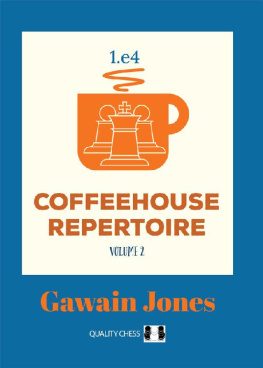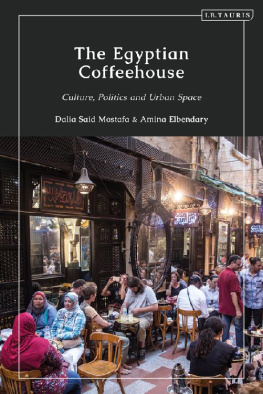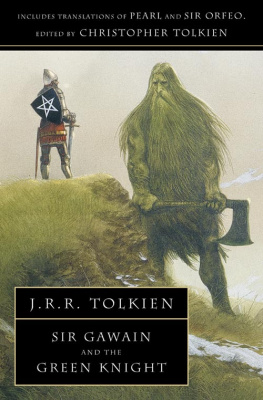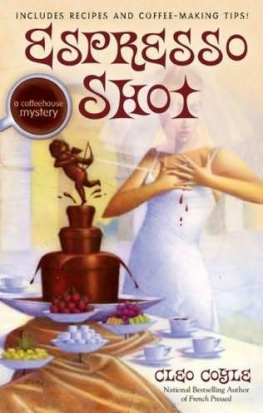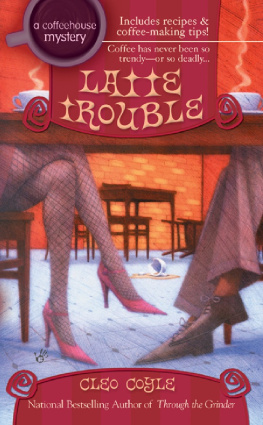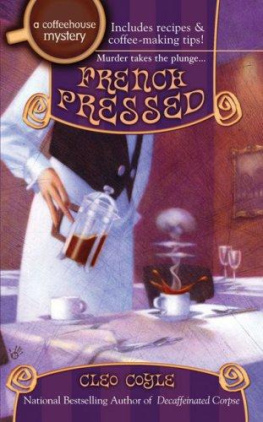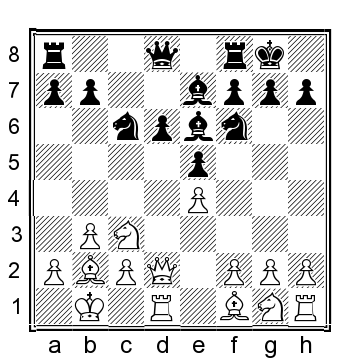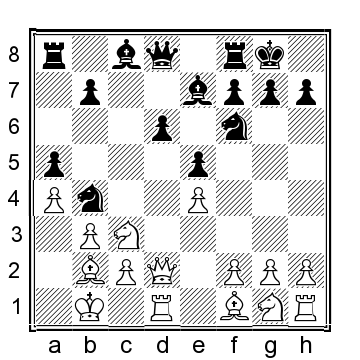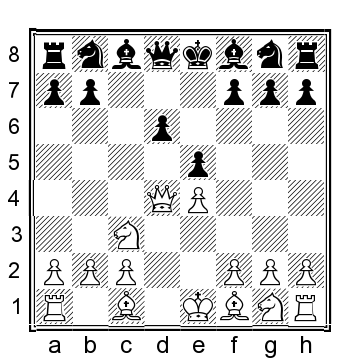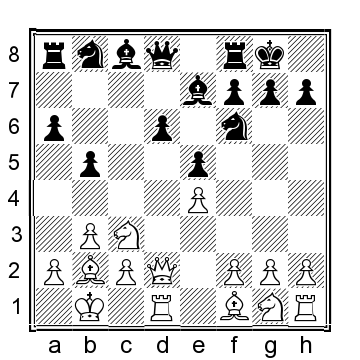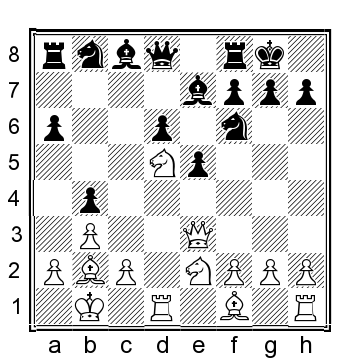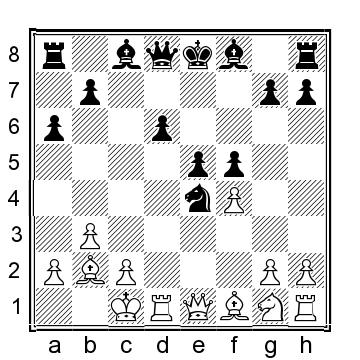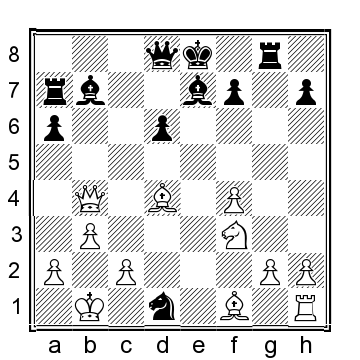
A) 4... N c6 5. Q d2 N f6 6.b3 e5 31
B) 4...e5!? 32
1.e4 c5 2. N c3 d6 3.d4 cxd4 4. Q xd4
We will look at two versions of the ...e7-e5 idea: A) 4... N c6 and B) 4...e5!?.
A) 4... N c6 5. Q d2 N f6 6.b3 e5
In general the combination of ... N c6 and ...e7-e5 doesnt work so well. In Najdorf set-ups, the knight traditionally belongs on d7.
7. B b2 B e7
7...a6 is too slow. This would transpose to the 4...a6 sideline discussed at the end of the chapter (see the note to the 7th move in line B of Section 1.4).
8.0-0-0 0-0
8... B e6?! Black isnt getting in ...d6-d5 here, so this move just makes the bishop a target. 9. K b1 0-0
10.f4! N 10...a5 ( 10...exf4 11. N ge2! ) White has a few promising options, but probably the most practical is: 11.f5 (11.a4!? is possible too of course) 11... B d7 12.g4!? a4 (12... N xg4? is way too greedy. Whites attack down the g-file plays itself.) 13.g5 Blacks best try is to give up the knight with 13... N xe4 14. N xe4 B xf5 but after 15. B d3 he has less than full compensation.
9. K b1 a5 10.a4 N b4
The strong young Armenian Gabuzyan has played this way a couple of times as Black. The idea is to break with ...d6-d5 so we should prepare against it.
11. N f3! N 11... Q c7
11... B e6 will be met by 12. N g5 .
12. B c4 B e6 13. B xe6 fxe6 14. Q e2
Blacks counterplay has been stymied and we can now enjoy our light squares. Black has to be careful to prevent the e6- and d6-pawns from falling. Our plans involve grabbing space on the kingside with h2-h4-h5, doubling on the d-file, and putting our knights on b5 and c4.
B) 4...e5!?
This is a decent try if Black wants a Najdorf set-up, although he also has to be ready for 5. B b5.
5. Q d2
We have options with the queen but its easier to be consistent.
5... N f6 6.b3 N bd7
This was tried in Meskovs Kanep, Tallinn 2018, where White opted for a kingside fianchetto.
6...d5!? N This break hasnt been played but its thematic in the Sicilian and so important to check. The following line looks pretty forcing: 7.exd5 B b4 8. B b2 N e4 9. Q e3 (I want to avoid the complications of 9. Q d3 B f5 10. Q b5 N c6! ) 9... Q xd5 Black regains the pawn but now White can develop with tempo. 10. B c4 Q d4 11. N ge2 Q xe3 12.fxe3 N c6 13.a3 B xc3 14. N xc3 N xc3 15. B xc3 Whites bishop pair should give him some edge.
6... B e7 7. B b2 0-0 8.0-0-0 a6 9. K b1 b5
In Perez Ponsa Sjugirov, Internet 2020, White automatically defended the e4-pawn with 10.f3 but it wasnt necessary yet. Id prefer:
10. N ge2! N
Keeping options of playing f2-f4 in one go. Lets see what happens if Black eats the central pawn:
10...b4
10... B b7 11. N g3
11. N d5 N xe4
This isnt worrying.
11... N xd5 12. Q xd5 Q b6!? 13. N g3 R a7 14.f4 gives us our typical attack.
12. Q e3 N f6
12... N c5 13.f4
13. N xf6 B xf6 14. N g3
Black has managed to snaffle a pawn but he has a lot of weaknesses: the d6-pawn, his light squares and his kingside. Best play looks like:
14... N c6! 15. Q e4 Q c7 16.f4
White has a dangerous attack.
7. B b2 N
We can follow our usual set-up, which soon converts to another game.
7...a6 8.0-0-0 b5 N
Although this exact position has not occurred to my knowledge, I think it makes sense to explore a few of Blacks options, as Blacks play strikes me as rather thematic.
8... N c5 was the only move played here, but its not so strong as White doesnt actually have to defend the pawn. 9.f4! N cxe4?! 10. N xe4 N xe4 11. Q e1 f5 ( 11...d5 would hardly help: 12. N f3! B e6 13. B d3 f5 14.g4!+ Blacks position collapses.)
12. B c4!? Q c7 13. N f3 Looking at the respective development, its not surprising that Black is in a lot of trouble. The greedy 13...exf4? made matters worse. 14. N g5 B e7 15. N xe4 fxe4 16. B xg7+ Keinanen Finnsson, Borgarnes 2019. Black is already losing at least a rook.
9. K b1 B e7 10.f3
While there are of course a lot of options for both sides I wanted to show a possible line showing some typical White ideas.
10...b4
10...h5 borrows an idea from our illustrative game, and is well known in the Najdorf, but 11.f4!? B b7 12. N f3 gives White promising play.
10... N c5 11.g4 b4 12. N ce2 a5 13. N g3 reaches a pretty typical Najdorf-style position, but the bishop is usually on e3 rather than b2. I think this is a decent version for White, as its not so easy for Black to make further gains on the queenside, while we have lots of kingside plans.
11. N d5
11. N a4!? is also possible.
11... N xd5 12. Q xd5 R a7 13.f4!
Opening up the position for the b2-bishop. My illustrative line continues:
13... N c5 14. N f3 B b7 15. Q c4 N xe4 16. Q xb4 N f2 17. B xe5!
Triumph for our bishop.
17... N xd1 18. B xg7 R g8 19. B d4
Black only has one way to fight on.
19... B e4! 20. Q e1!? Q c8! 21. Q xe4 N c3 22. B xc3 Q xc3 23.g3
Black has survived for now and rough material parity has been restored. However, the ensuing ending will be unpleasant for Black, due to his four pawn islands and the abundance of outposts for Whites minor pieces.

A) 6... B g7 36
B) 6... B h6 7.f4 39
B1) 7...f5!? 8. B b2 N f6 9.0-0-0!? 40
B11) 9... R f8!? 42
B12) 9...fxe4 43
B2) 7... N f6 8. B b2 0-0 9.0-0-0 44
B21) 9...e5 45
B22) 9...a5 10.a4 48
B221) 10... N b4 48
B222) 10...e5 50
1.e4 c5 2. N c3 d6 3.d4 cxd4 4. Q xd4 N c6 5. Q d2 g6
5... N f6 6.b3 g6 will convert to variation A below.
Next page

